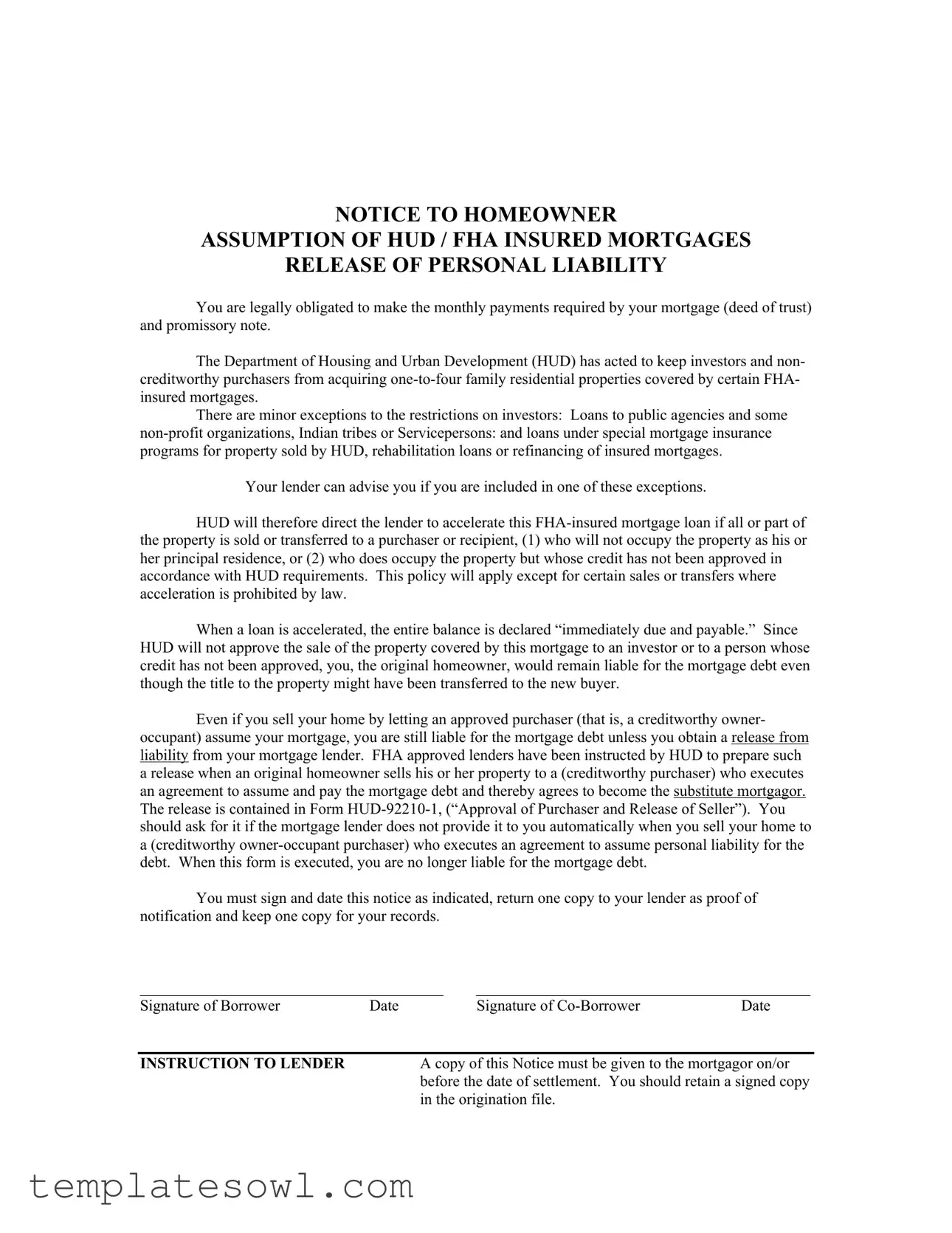What is the Homeowner Assumption HUD/FHA Form?
The Homeowner Assumption HUD/FHA Form is used when a homeowner sells their property to a creditworthy buyer who assumes the existing FHA-insured mortgage. This form helps ensure that the original homeowner can be released from liability for the mortgage debt after the transfer of the property.
Why is this form necessary?
This form is required because original homeowners remain responsible for the mortgage debt even if they sell their property. The form, specifically Form HUD-92210-1, allows the original borrower to be released from responsibility upon a successful transfer to a creditworthy buyer who agrees to assume the mortgage.
Who needs to sign the form?
Both the original homeowner (borrower) and the lender must sign the form. The original homeowner will need to complete the steps to ensure they are no longer liable for the mortgage debt once the property has sold.
What happens if the buyer does not meet HUD's credit requirements?
If the buyer does not meet HUD's credit requirements, the lender is required to accelerate the mortgage loan. This means that the full remaining balance of the mortgage becomes immediately due and payable. The original homeowner will still be liable for the mortgage, regardless of the property's transfer.
Are there any exceptions to the rules regarding FHA-insured mortgages?
Yes, there are some exceptions. Loans to public agencies, certain non-profit organizations, Indian tribes, service members, and special mortgage insurance programs are among those that may not require adherence to these restrictions.
How can I obtain a release of liability?
To obtain a release of liability, the homeowner should request it from their mortgage lender when selling the property. If the lender does not provide this release at the time of sale, the homeowner must ensure to ask for Form HUD-92210-1 to be completed upon the sale to a creditworthy purchaser.
What should I do after signing the notice?
After signing the notice, the original homeowner should return one copy to the lender as proof of notification. It is also important to keep another copy for personal records. This documentation helps provide proof of the liability release once the transaction is complete.
What is the lender's responsibility regarding this form?
The lender must provide a copy of this notice to the mortgagor prior to the settlement date. Additionally, they should retain a signed copy in the origination file for their records.
When can I sell my home to an investor?
What happens to the mortgage if the homeowner does not sell to a creditworthy purchaser?
If the homeowner sells to someone who does not meet the credit approval criteria, the borrower remains liable for the mortgage, and the loan may be accelerated. This emphasizes the importance of ensuring that the new buyer is creditworthy and capable of assuming the mortgage responsibility.
